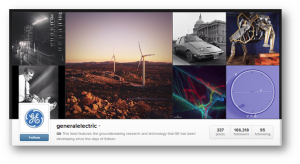One undeniable truth about the current stock-market boom is that a big chunk of the market’s rise has been the result of outsized gains in a very small number of stocks, including most notably the so-called Magnificent Seven mega-cap growth companies (Meta, Amazon, Apple, Microsoft, Alphabet, Nvidia, and Tesla). Those companies collectively account for almost 30% of the market capitalization of the S&P 500, and that concentration shows no sign of diminishing: Last week, after it reported better-than-expected earnings, Meta’s market value rose by $200 billion in a single day.
Investors may not be bothered by this market concentration, but analysts at JPMorgan are, and last week they published a note arguing that the nature of the market today has some unsettling similarities to the Dotcom Bubble of the late 1990s and early 2000s. The top 10 stocks in the MSCI USA index (which includes 609 large- to mid-cap stocks) accounted for 29.3% of the index’s market cap at the end of December. That’s not far below the 33.2% of the index’s cap that the 10 biggest companies accounted for in June 2000 (just as the tech bubble was bursting).
Today’s top 10 stocks are also not diverse—they come from only four sectors, compared to six in 2000, and most have some kind of tech exposure. And there’s concentration even within the 10 biggest companies—the top five stocks alone accounted for 21.7% of the MSCI USA market cap (which is close to the March 2000 peak of 22.4%), and Apple and Microsoft together account for roughly 40% of the market cap of the top 10.
As the earnings reports of the past week have shown, these companies obviously have solid fundamentals and are continuing to grow earnings at a healthy clip. But the JPMorgan analysts found that the top 10 companies in 2000 actually contributed a larger share of the market’s overall earnings growth that the top 10 companies today are. All of which, they argue, suggests that mega-cap stocks are relatively overvalued, and may be headed for a period where they underperform the rest of the market. And given how important they are, that could, potentially drag down the market as a whole.
This is an interesting analysis, and it’s certainly plausible that mega-cap valuations have raced ahead of themselves as a result of A.I. mania and investors trying to chase performance. Certainly when you look at a stock like Nvidia’s, which has already risen 42% since the year began and now sports a sky-high price-to-earnings ratio of 90, it’s hard not to think of the way tech companies like Cisco saw their valuations skyrocket in the late 1990s.
For all that, though, the analysis ultimately feels overstated and overblown. To begin with, it’s not the case that only a few large stocks did well in 2023: 145 stocks in the S&P 500 had total returns of 25% or greater (better than the market as a whole) last year. So there was breadth in the market’s gains, even if megacap stocks were the biggest driver of them. And revenue growth was robust across the market—the Magnificent Seven, according to Goldman Sachs’ equity research team, grew at 18% annually over the past two years, while the rest of the S&P 500 grew at 15%.
That might make you wonder why the top stocks did so much better, relatively speaking. The answer is that their net profit margins are nearly twice as high as the rest of the market, and they’re forecasted to grow earnings-per-share at 17% over the next three years, compared to 9% for the rest of the index. So there is a logic to them being more highly valued.
The more important point, though, is that even if you want to make the argument that the biggest companies in the market are overvalued, the comparison to the dot-com bubble is misleading, insofar as it suggests that valuations today are as out of whack as they were in 2000. They’re not. As the JPMorgan analysts say themselves, the P/E ratio for the 10 biggest companies hit 41.2 at its dot-com peak. Today, the P/E ratio for the 10 biggest companies is 26.8, significantly lower. Consider that Cisco, which was one of the dot-com era’s market giants, had a market capitalization of $550 billion at its peak, which gave it a P/E ratio of 201. That makes Nvidia today, by comparison, look reasonably priced.
On top of this, what made the dot-com bubble a bubble was not that a small number of stocks had inflated valuations. Rather, it’s that the market as a whole was massively overvalued. In other words, it’s not just that the top 10 companies accounted for 33% of the overall market in 2000, but that the overall market they were a share of was ridiculously overpriced.
The Nasdaq, for instance, was trading by some measures at a P/E ratio of 175 at its peak. And there were simply many more companies that had little to no earnings but were nonetheless being given multi-billion-dollar valuations. And it was also the case that when the dot-com bubble burst, it wasn’t just stock prices that fell. Earnings plummeted as well, since so much of the earnings growth during the bubble was the product of tech companies’ free-spending ways.
It’s fine to be wary of the stock market’s current valuation, and of megacap valuations in particular, given how dramatic the gains have been since the market bottomed in October 2022. But while invoking the dot-com bubble is a good way to get headlines, it’s a comparison that ultimately obscures more than enlightens.
(16)
Report Post








